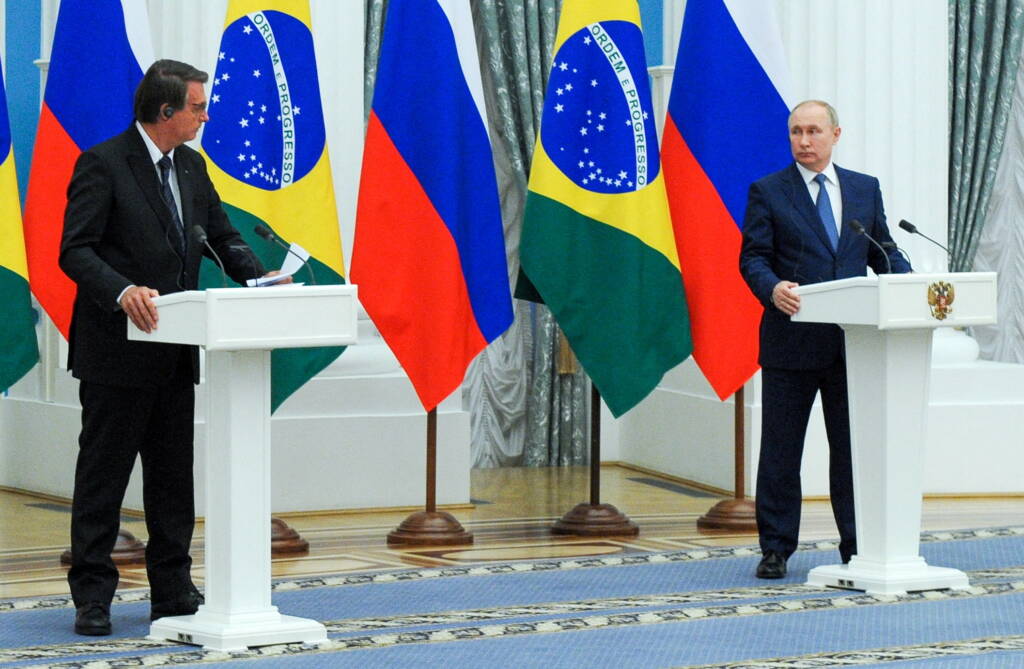According to Niels Rasmussen, Chief Shipping Analyst at BIMCO, the European Union’s 2022 sanctions on Russian oil exports have redirected crude oil and petroleum products to new markets. India and China have primarily absorbed crude oil and dirty petroleum products, while Türkiye and Brazil have become major buyers of clean petroleum products (CPP). Notably, Brazil’s import of Russian CPP has surged by 135% year-on-year.
Historically, the United States was Brazil’s principal supplier of CPP, benefiting from strong trade relations, geographical proximity, and consistent product quality standards. At its peak, the U.S. supplied nearly half of Brazil’s CPP imports. However, this dynamic has shifted. Since April 2023, Russia has overtaken the U.S. as the leading CPP supplier to Brazil. U.S. exports to Brazil have declined by nearly 50% compared to the same period last year, while U.S. exports to Europe have increased.
Following the EU sanctions, Brazilian CPP imports from Russia rose significantly in early 2023, averaging nearly 650,000 tonnes over the last eight months of the year. In 2024, this figure has further increased, with monthly volumes averaging 830,000 tonnes in the first four months, according to Rasmussen.
Currently, Russia supplies 50% of Brazil’s CPP imports, while the U.S. contributes only 13%. Additionally, 16% of all Russian CPP exports are shipped to Brazil, making it the second-largest importer of Russian CPP after Türkiye, which accounts for 29% of Russian CPP imports.
These developments underscore a significant shift in global energy trade patterns, influenced by geopolitical sanctions and evolving market demands.
Interestingly, the shift in suppliers has not led to significant changes in the ship sizes transporting Brazil’s clean petroleum products (CPP) imports. Medium Range (MR) and Long Range 2 (LR2) vessels still account for nearly 90% of all volumes discharged in Brazil.
The longer distances from Russia to Brazil have benefitted all shipping sectors. Year-to-date, tonne miles for Brazil’s CPP imports have increased by 6% compared to last year, despite a 3% decrease in volumes. This is due to a 9% rise in average sailing distance. The redirection of U.S. exports from Brazil to Europe has not significantly impacted sailing distances.
Brazil’s new buying patterns have contributed to a 3% rise in average sailing distances for global CPP volumes from 2022 to 2023. The ongoing crisis in the Red Sea has further driven a 4% increase in 2024.
There is no indication that Brazil will reduce its imports from Russia. However, volumes may decline. Russian refineries have recently suffered from Ukrainian attacks, leading to a significant reduction in Russia’s total CPP exports. Rasmussen notes that in April, Russian CPP exports appeared to have halved compared to previous months.
Brazil is increasingly importing clean petroleum products (CPP) from Russia due to several factors. Countries often opt for the most affordable and efficient options available, and Russian CPP offers a competitive advantage. The effectiveness of sanctions has diminished, with India pioneering a global movement that challenges their impact. Furthermore, America’s patronizing approach toward Latin America has pushed countries like Brazil to seek alternatives. Russia’s diplomatic efforts and the influence of the BRICS alliance have also played significant roles in this shift, reinforcing economic and strategic ties between Brazil and Russia.
These developments highlight how geopolitical tensions and shifting trade patterns are reshaping global energy logistics. Despite the challenges, the shipping industry continues to adapt, ensuring the steady flow of essential petroleum products across vast distances.
